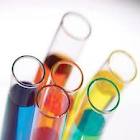Comparison of Sieve analyses, laser diffraction, image analyses and FBRM for the determination of particle size distributions part 1
Saturday, January 7th, 2012 3:33:48 by Ahmed Tariq
Comparison of Sieve analyses, laser diffraction, image analyses and FBRM for the determination of particle size distributions part 1
Abstract Particle size distributions (PSDs) measured by different techniques, including Sieve Analyses (SA), Image Analysis (IA), Laser Diffraction (LD) and Focused-Beam Reflectance Measurement (FBRM), were investigated. The two compounds
selected for the study were spherical glass beads and non-spherical Sodium Chloride.
It was observed that the results obtained by different techniques were affected by the particle shape and the type of particle. For spherical particles, the PSDs obtained by SA, IA and LD agreed well but there was less consistent result among different particle
measurement techniques for non-spherical particles.
The number based PSDs obtained by IA were converted to equivalent spherical volume based PSDs. It is very complicated to convert the CLDs obtained from FBRM to its corresponding PSDs as it requires complicated calculations.
The use of different statistics was evaluated to find the most suitable statistics which resemble to the PSD results obtained from other techniques. It was confirmed that the square weighted Chord Distribution gives most similar results to those obtained
by other techniques. The results obtained from FBRM were complex as its measurements depend on many factors such as its PSDs, particle optical properties and shape.
Introduction Particle size distribution (PSD) is an important parameter of many particulate products and it is critical for controlling process efficiency such as filtration rates, flow properties, or dissolution rates (Kempkes et al., 2007;
Hareland, 1994).
Within the pharmaceutical industry, the PSD characterization of particles is generally of great concern for evaluating the quality of pharmaceutical products (Tinke et al., 2008). A variety of characteri- zation techniques are used for the determination
of PSD in current chemical process industry such as Sieve Analysis (SA), Laser Diffraction (LD), Ultrasonic Attenu- ation Spectroscopy (UAS), Image analysis (IA) and focused beam reflectance measurement (FBRM). LD, FBRM and IA are among the most widely used
in-process or off-line techniques (Li, 2005).
Each technique defines a size of particle in a different way. Sieving is the most common method for measuring size distributions of many types of materials because of its simplicity of use and preparations. Samples are sieved through several square meshes.
The sieve defines a particle diameter as whether the particle can pass through the particular mesh- size or not (Konert and Vandenberghe, 1997). The significant advantage of SA is that the sieves can test large amounts of particles without being very expensive.
However, sieving is very labour-intensive and involves long measurement times. Furthermore, the sieving time for SA is one of several factors which can significantly affect the final results of measurement (Chapeau, 2008).
Short URL: https://www.newspakistan.pk/?p=8427


















[…] Comparison of Sieve analyses, laser diffraction, image analyses and FBRM for … Abstract Particle size distributions (PSDs) measured by different techniques, including Sieve Analyses (SA), Image Analysis (IA), Laser Diffraction (LD) and Focused-Beam Reflectance Measurement (FBRM), were investigated. The two compounds selected for … Read more on News Pakistan […]